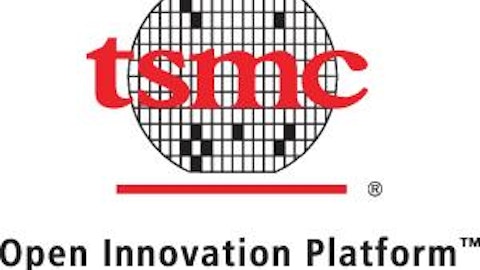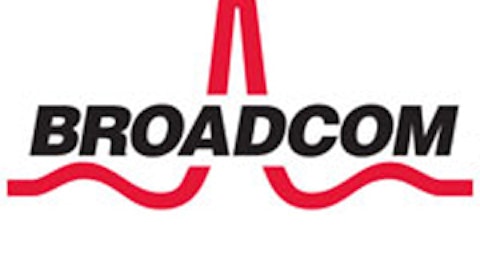Therefore, Intel Corporation (NASDAQ:INTC) is designing x86 chips that are generally less power efficient, but it at least adheres to what Intel knows how to do. As a result, Intel has to woo developers to accept a x86 chipset design over an ARM even though Android and Apple mobile ecosystem’s have been built on an ARM-based design. Generally speaking, better benchmarks are meaningless if Android programs and application aren’t fully optimized for an x86 processor. 95% of smartphones currently operate using the ARM chip design, meaning that Intel’s gain in market share could be limited even if it were to design a faster processor.
ARM-based processors are practical in that they sip less battery, it’s a complete system on a chip which means higher yields in the fabrication process, Most phone developers would choose the practicality of having a power-efficient processor, with higher yields, over a more powerful processor that may not be fully supported by certain programs.
Problems that must be addressed
Intel Corporation (NASDAQ:INTC)’s Paul Otellini resigned in the fourth quarter of 2012. He has an MBA from the Haas School of Business (California Berkley). Looking closely at Mr. Otellini’s education background, it is highly likely that he thought that Intel’s business positioning was awful. It is likely that the CEO at the time realized the same things you realized in this article, that Intel could thrive in its specific niche of x86 chips, but when it comes to being a semiconductor company outside of its core area of strength, it does extremely poorly.
In Intel Corporation (NASDAQ:INTC)’s latest quarter, it was unable to turn around all the idle capacity in its fabrications running at 50% capacity. It doesn’t help that the company’s mobile offerings (Atom) were unable to win any significant market share from its rivals like QUALCOMM, Inc. (NASDAQ:QCOM) and ARM Holdings plc (NASDAQ:ARMH). Likewise, the company doesn’t provide a practical business solution in the pure-play-fabrication space.
Just because a company has some of the best engineers in the world does not mean they can come up with the best processing solutions for mobile overnight. In fact, it is like taking a group of pro NFL players and retro-fitting them into NBA players. The thought is so laughable; I thought I’d make the comparison of Intel x86 engineers becoming ARM-based engineers.
Conclusion
Investors shouldn’t get their hopes too high. Intel Corporation (NASDAQ:INTC) is unlikely to capture any serious market share in either the mobile or the pure-play fabrication space. Hence, analysts have been neutral to bearish on the stock. Declining desktop demand adds further to Intel’s troubles.
Investors should invest into Taiwan Semiconductor Mfg. Co. Ltd. (NYSE:TSM) or QUALCOMM, Inc. (NASDAQ:QCOM) instead.
The article Can Intel Compete With These Titans? originally appeared on Fool.com.
Alexander is a member of The Motley Fool Blog Network — entries represent the personal opinion of the blogger and are not formally edited.
Copyright © 1995 – 2013 The Motley Fool, LLC. All rights reserved. The Motley Fool has a disclosure policy.

